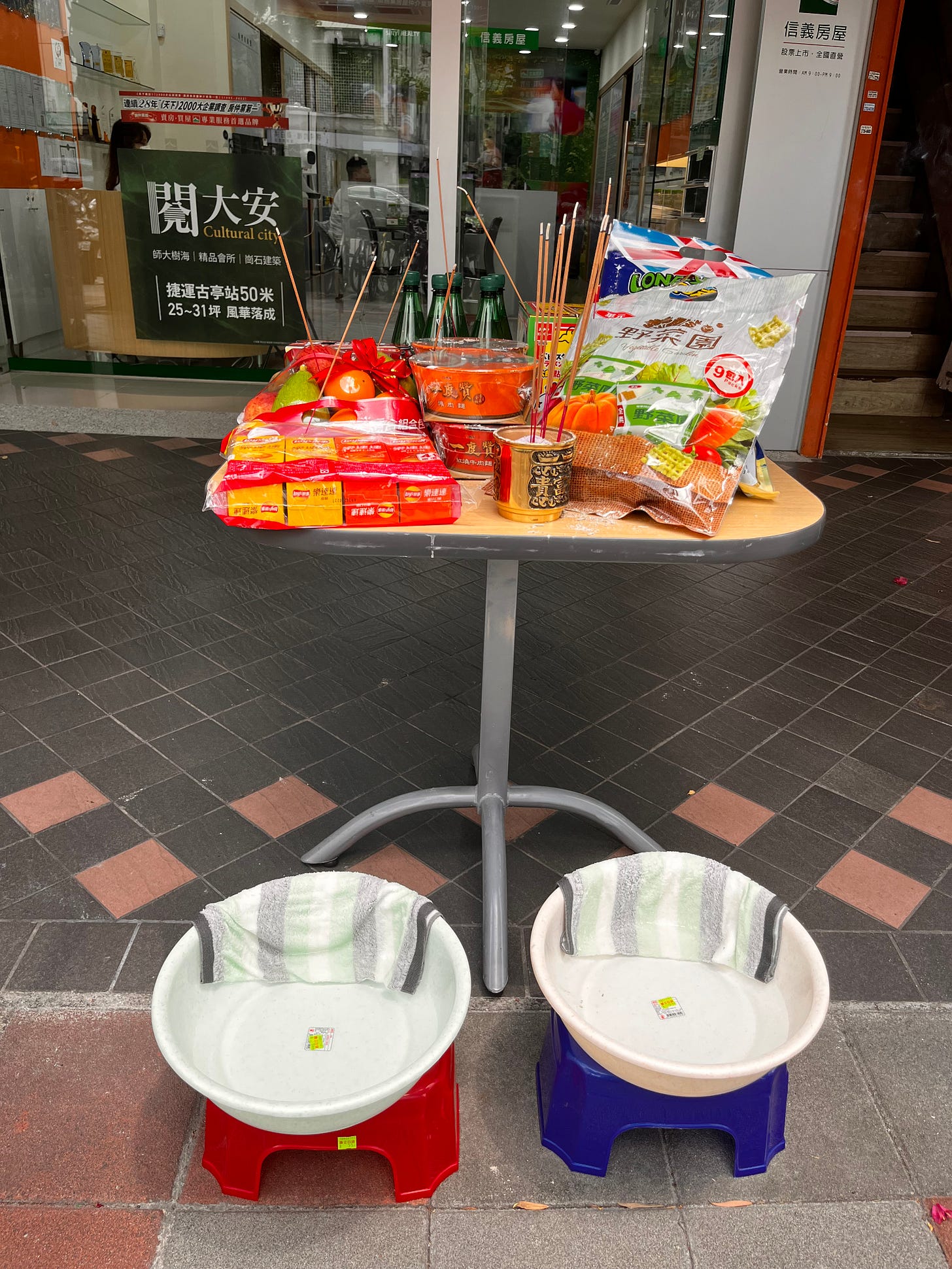Ghost Month Is Almost Here
On worshipping the marginal and "improperly dead." Plus Melissa Fu's Peach Blossom Spring for our next book club.

Hello readers,
Albert here. For the past few weeks I’ve been working in an archive in Stuttgart, Germany, abandoning Michelle to experience the joys (miseries) of solo parenting. Unfortunately, little P. has been hit by successive bouts of illness and they’ve both been homebound.
In lieu of a new post, we’re re-running our piece on Ghost Month, which begins in Taiwan in nine days. This year, on August 15th, the gates of hell will open and ghosts will enter the world of the living. Nearly every sector—from the local mechanics to the real estate moguls—observes rituals to acknowledge them.
But before we get to the piece, a few quick recommendations. First, season 2 of The Bear (FX/Hulu). We loved the first season, which we devoured during our ten-day quarantine last year. Here’s what we wrote about season one:
The Bear…



